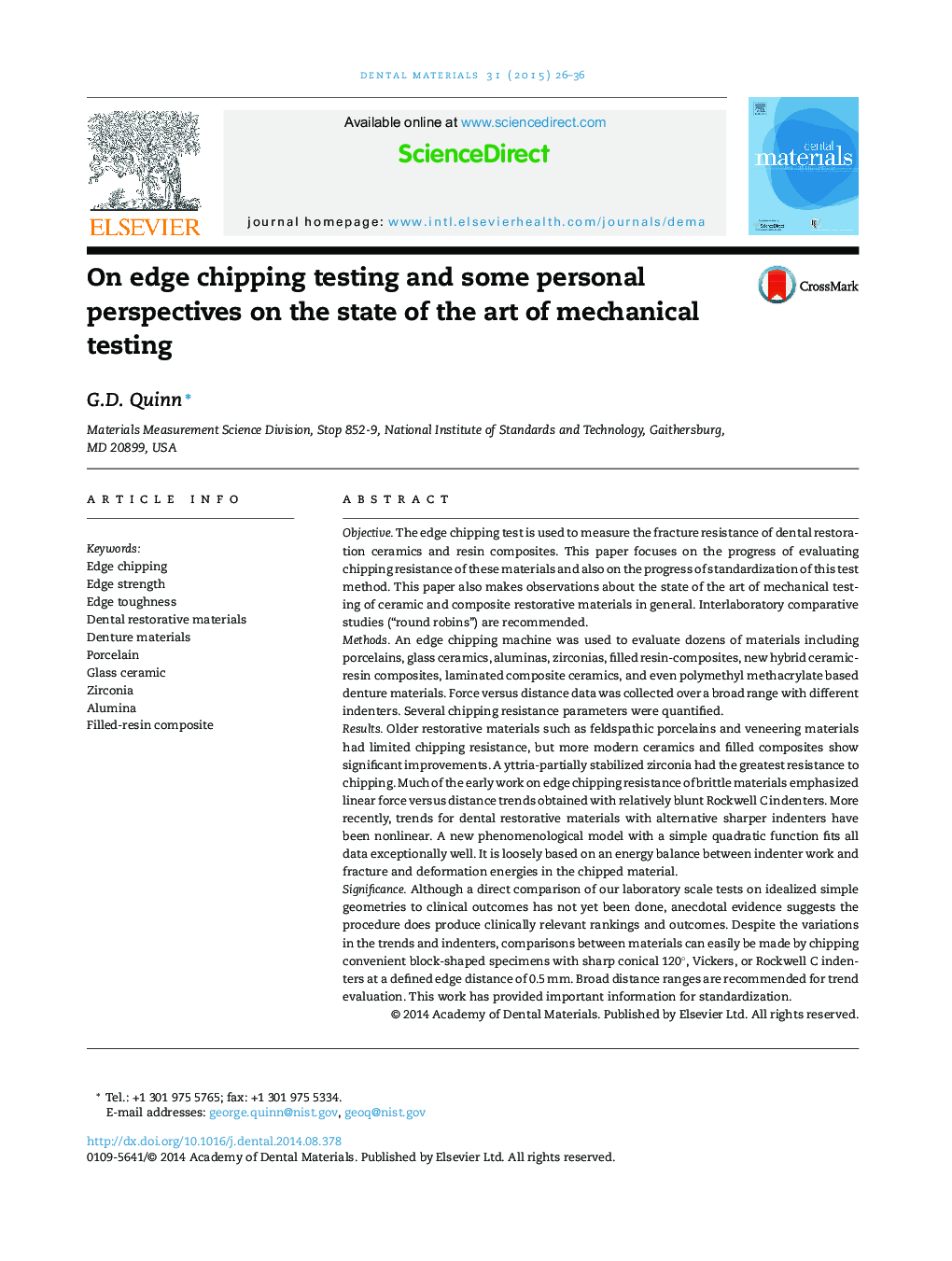| کد مقاله | کد نشریه | سال انتشار | مقاله انگلیسی | نسخه تمام متن |
|---|---|---|---|---|
| 1420646 | 986377 | 2015 | 11 صفحه PDF | دانلود رایگان |
• Edge chipping tests with simple rectangular test blocks evaluate a materials resistance to chipping.
• Materials may be ranked for their chipping resistance.
• Force versus distance trends may be linear or nonlinear depending upon the sharpness of the indenter.
• A new model of edge chipping resistance is presented.
• Round robins (interlaboratory comparative studies) are a valuable tool to improve mechanical testing procedures and should be used more often by the dental materials community.
ObjectiveThe edge chipping test is used to measure the fracture resistance of dental restoration ceramics and resin composites. This paper focuses on the progress of evaluating chipping resistance of these materials and also on the progress of standardization of this test method. This paper also makes observations about the state of the art of mechanical testing of ceramic and composite restorative materials in general. Interlaboratory comparative studies (“round robins”) are recommended.MethodsAn edge chipping machine was used to evaluate dozens of materials including porcelains, glass ceramics, aluminas, zirconias, filled resin-composites, new hybrid ceramic-resin composites, laminated composite ceramics, and even polymethyl methacrylate based denture materials. Force versus distance data was collected over a broad range with different indenters. Several chipping resistance parameters were quantified.ResultsOlder restorative materials such as feldspathic porcelains and veneering materials had limited chipping resistance, but more modern ceramics and filled composites show significant improvements. A yttria-partially stabilized zirconia had the greatest resistance to chipping. Much of the early work on edge chipping resistance of brittle materials emphasized linear force versus distance trends obtained with relatively blunt Rockwell C indenters. More recently, trends for dental restorative materials with alternative sharper indenters have been nonlinear. A new phenomenological model with a simple quadratic function fits all data exceptionally well. It is loosely based on an energy balance between indenter work and fracture and deformation energies in the chipped material.SignificanceAlthough a direct comparison of our laboratory scale tests on idealized simple geometries to clinical outcomes has not yet been done, anecdotal evidence suggests the procedure does produce clinically relevant rankings and outcomes. Despite the variations in the trends and indenters, comparisons between materials can easily be made by chipping convenient block-shaped specimens with sharp conical 120°, Vickers, or Rockwell C indenters at a defined edge distance of 0.5 mm. Broad distance ranges are recommended for trend evaluation. This work has provided important information for standardization.
Journal: Dental Materials - Volume 31, Issue 1, January 2015, Pages 26–36
